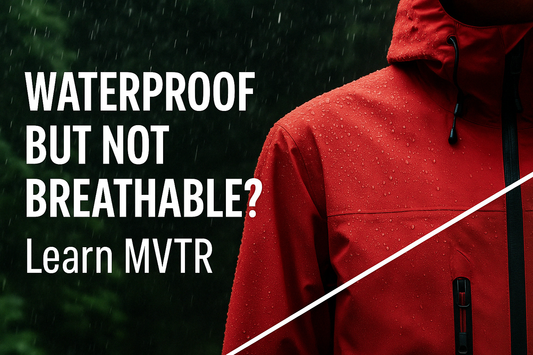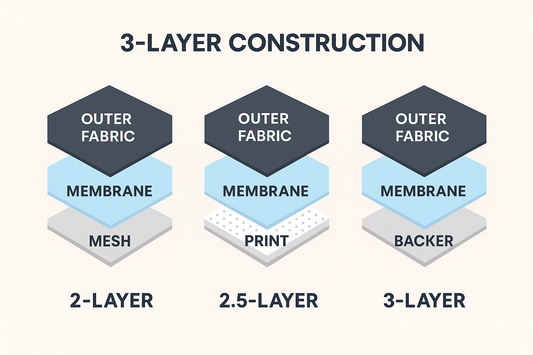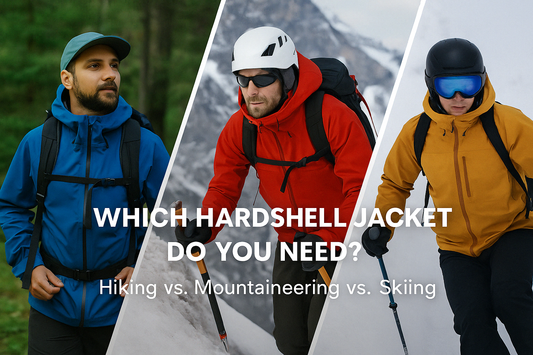
Parka vs Puffer: Key Differences and How to Find the Best Jacket for You
Share
Every man needs a winter jacket that works as well as it looks. Can’t decide between a parka and a puffer? You’re not alone.
This guide breaks down their key differences so you can choose the right jacket for your climate, activity, and lifestyle — whether you’re braving sub-zero cold or just looking for everyday comfort.
Parka vs Puffer: A Quick Comparison
|
Category |
Parka |
Puffer Jacket |
|
Design Purpose |
Weather defense | Thermal efficiency |
|
Warmth |
Consistent, full-body | Adaptive, localized |
|
Weather Resistance |
Waterproof / high | Moderate water resistance |
|
Weight |
Heavy | Light |
|
Mobility |
Limited | High |
|
Breathability |
Low | Moderate |
|
Durability |
High | Moderate |
|
Packability |
Low | High |
|
Aesthetic |
Structured, classic | Sporty, casual |
|
Best Use Case |
Severe cold, long exposure | Daily wear, active climates |
What Is a Parka?
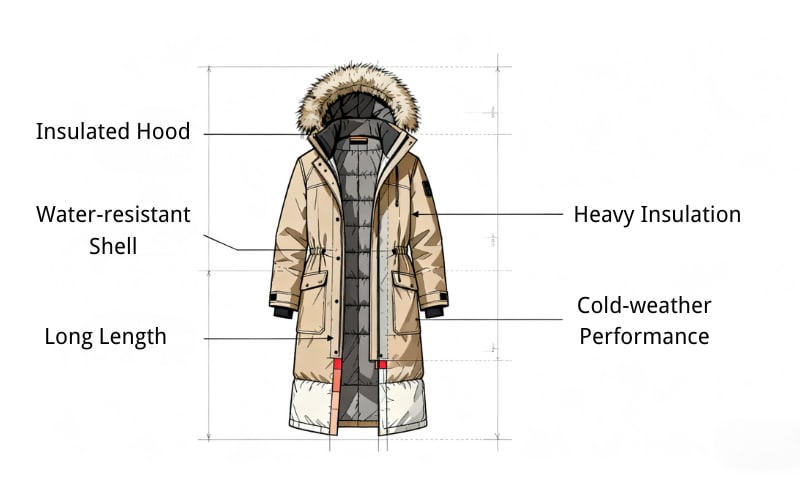
A parka is a long, insulated winter coat designed to keep you warm and dry in harsh, cold weather.
History
The parka’s story begins in the Arctic, where the Inuit people created fur-lined coats called Amauti to withstand freezing winds. Decades later, the design evolved into military outerwear for soldiers facing brutal cold. That functional DNA never left — it simply adapted. Today, the parka remains a go-to piece for anyone who wants serious warmth with timeless style.
Key Features
Length: Parkas are longer than standard jackets, reaching the thighs or knees for better coverage and insulation.
Insulation: They’re heavily padded with down or high-performance synthetic fill to trap body heat and block out the cold.
Shell: Most parkas use tough nylon or polyester shells treated for waterproofing or strong water resistance.
Hood: A signature element — often fur-trimmed or insulated — that provides crucial protection against wind and snow.
Performance
Parkas are built for performance in rough weather. Their thick insulation and weatherproof shells make them ideal for cold, windy, or snowy conditions — from long city commutes to weekend storms. They’re heavier and less packable than lighter jackets, but that’s the trade-off for serious warmth and durability.
- What is a parka jacket used for? It’s designed for cold, wet, or windy conditions — perfect for winter commuting, outdoor activities, and travel in freezing climates.
- Is a parka waterproof? Most parkas are water-resistant, and many premium versions are fully waterproof thanks to sealed seams and coated fabrics.
- Are parka coats for winter? Yes — parkas are made specifically for winter. Their long cut and heavy insulation make them some of the warmest outerwear you can own.
Style Identity
The parka has a timeless, structured silhouette rooted in its military past. It’s practical yet refined, projecting confidence and resilience — the kind of coat that makes you look prepared, not bundled up. Whether you wear it over a suit or with jeans and boots, it signals one thing: you’re ready for winter.
What Is a Puffer Jacket?
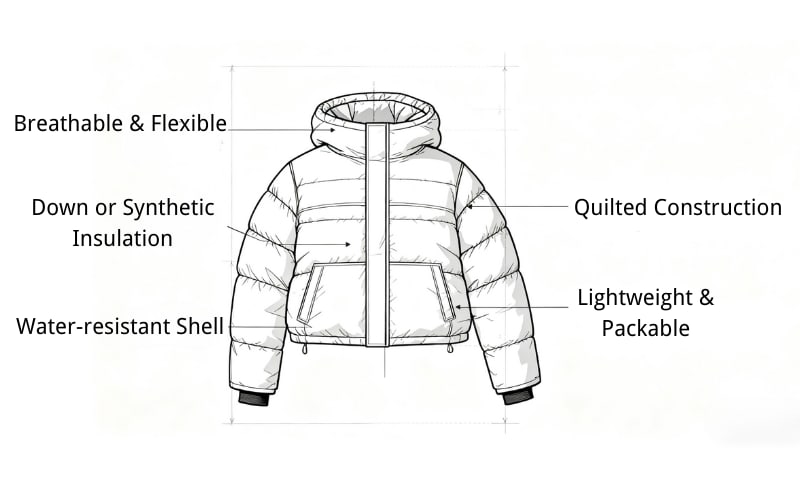
A puffer jacket — sometimes called a quilted or down jacket — is a lightweight, insulated coat designed to keep you warm without weighing you down. Its signature look comes from the “puffed” quilted sections that trap air and hold heat close to your body.
History
The puffer jacket originated in the 1930s as a lightweight, insulated coat designed for warmth during outdoor activities like fishing and hiking. Its quilted construction made it both warm and easy to move in. Over the decades, it evolved from pure utility into a modern fashion staple — a versatile piece that works as well in the city as it does in the mountains.
Key Features
Quilted Construction: The hallmark of a puffer jacket is its quilted design — those pillowy compartments that give it that instantly recognizable shape. Each “puff” traps pockets of air, which serve as natural insulation to retain warmth efficiently.
Insulation: Puffers can be filled with either natural down (from goose or duck feathers) or advanced synthetic materials. Down is lighter and compresses better, while synthetic insulation performs more reliably in damp conditions — it stays warm even when wet.
Weight & Packability: Unlike heavy coats, puffers are ultralight and highly compressible. Many can be rolled up and stuffed into a travel bag or even their own pocket, making them perfect for travel or layering on the go.
Performance
Puffer jackets are known for their impressive warmth-to-weight ratio — they deliver serious insulation without the bulk. Their construction also makes them breathable and flexible, ideal for active movement whether you’re walking the city streets or hiking a winter trail.
Most puffers are water-resistant thanks to treated shell fabrics like nylon or polyester. Some technical versions even offer full waterproofing, though in heavy, wet snow you’ll still want a shell layer on top for maximum protection.
- Do puffers actually keep you warm? Yes — that’s their entire purpose. A well-insulated puffer traps body heat incredibly effectively while staying light and easy to wear.
- Can puffer jackets be worn in snow? Absolutely. Most are designed to handle cold, snowy conditions, especially if the outer fabric is water-resistant. For heavy, wet snow, pair it with a waterproof shell for extra protection.
- Are down puffers warm? Down puffers are among the warmest options available. The higher the “fill power” (usually measured between 550 and 900), the better the warmth and loft.
- What are the disadvantages of down jackets? Down loses some of its insulating power when it gets wet and can take time to dry. That’s why many people choose synthetic-fill puffers for damp or unpredictable climates.
- Is a puffer jacket good for winter? Definitely. A quality puffer offers excellent warmth and versatility, especially in dry, cold winters. It’s also ideal for layering — wear it alone on mild days or under a shell when temperatures drop.
Style Identity
The puffer is sporty, modern, and built for motion — the perfect crossover between outdoor function and urban style. Puffers now come in a huge range of designs, from minimalist matte versions to bold, glossy statement pieces. Whatever your personal style, there’s a puffer that fits right in.
What Is the Difference between a Parka and a Down Jacket?
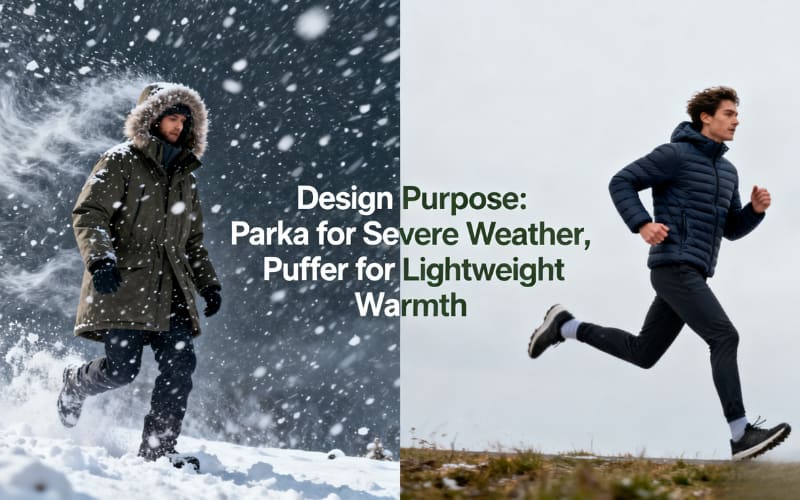
Parkas and puffers are both designed to provide insulation and protection during winter, but their structures, materials, and intended use cases are different. Understanding these distinctions helps you choose the right jacket based on environment, mobility, and climate needs.
1. Design Purpose
A parka is designed for maximum protection in severe weather. Its construction focuses on minimizing exposure to cold, wind, and moisture through length, coverage, and multiple shell layers.
A puffer jacket prioritizes lightweight warmth and flexibility. It focuses on thermal efficiency through insulation that traps air while allowing movement.
2. Warmth and Thermal Efficiency
Both jackets retain heat through trapped air, but their insulation behavior differs.
Parkas use thicker, uniform insulation that distributes warmth evenly over a larger surface area. The long cut covers the thighs and lower torso, reducing heat loss.
Puffers rely on segmented insulation (baffles) that creates localized air pockets. This allows for faster heating and more consistent temperature regulation during activity.
3. Weather Resistance
Parkas are constructed with durable outer shells, often multi-layer laminates such as nylon, polyester, or technical membranes. These materials provide high resistance to wind and precipitation. Sealed seams, storm flaps, and extended hoods further reduce moisture penetration.
Puffers generally use single-layer nylon or polyester fabrics treated with DWR (Durable Water Repellent) finishes. These coatings resist light rain and snow but can lose effectiveness with prolonged exposure.
4. Weight and Comfort in Motion
Parkas are heavier due to longer length, dense insulation, and reinforced shells. They provide stability but limit freedom of movement, especially during extended physical activity.
Puffers are lighter and cut shorter, allowing greater mobility. They are better suited for walking, hiking, or active daily wear.
5. Breathability and Moisture Control
Breathability determines how effectively a jacket releases body heat and moisture.
Parkas trap heat effectively but have lower breathability because of their multi-layer construction. In extended activity, internal condensation can occur.
Puffers allow more airflow through their thinner outer fabric and stitched channels. They balance insulation with moderate ventilation, reducing the risk of overheating.
6. Durability and Maintenance
Parkas are built for long-term durability. Their outer shells resist abrasion and moisture, and they often feature reinforced stitching. Maintenance includes reapplying waterproof coatings and occasional professional cleaning.
Puffers are less resistant to abrasion and tearing. The thinner fabric can snag easily. However, they are simpler to clean and faster to dry, especially when filled with synthetic insulation.
7. Weight-to-Performance Ratio
Puffers provide a higher warmth-to-weight ratio. They deliver significant insulation with minimal mass. This makes them efficient for climates where warmth and portability are both priorities.
Parkas provide comprehensive insulation but with added weight. Their performance is optimized for severe cold, not for lightweight travel.
8. Style and Fit
Parkas feature structured silhouettes, longer hems, and often a defined waist or fishtail back. The aesthetic aligns with classic, utilitarian menswear and is suitable for formal or semi-formal winter wear.
Puffers have shorter, more relaxed fits. Their design supports casual or sport-oriented styling. They pair well with streetwear and performance-oriented wardrobes.
9. Climate Suitability
Parkas perform best in regions with prolonged sub-zero temperatures, wind, and snow. They are ideal for stationary or low-activity situations in extreme cold.
Puffers suit regions with moderate to cold climates where temperature fluctuation is common. Their lightweight build supports layering and frequent transitions between indoor and outdoor environments.
10. Cost and Longevity
Parkas typically cost more due to advanced shell construction, waterproofing, and insulation volume. They are long-term investments with a lifespan of many winters if maintained properly.
Puffers vary widely in price depending on fill type (synthetic or down). Synthetic models are affordable but may compress faster over time. Down versions offer premium warmth but require careful care.
In short:
Choose a parka if you need maximum warmth and weather resistance in harsh winter environments. Its structure and insulation make it suitable for cold, wet, and static conditions.
Choose a puffer if you value lightweight performance, flexibility, and easy layering. It performs better in variable climates and during active movement.
Related Reading: Parka vs Jacket.
When to Wear: Parka vs Puffer
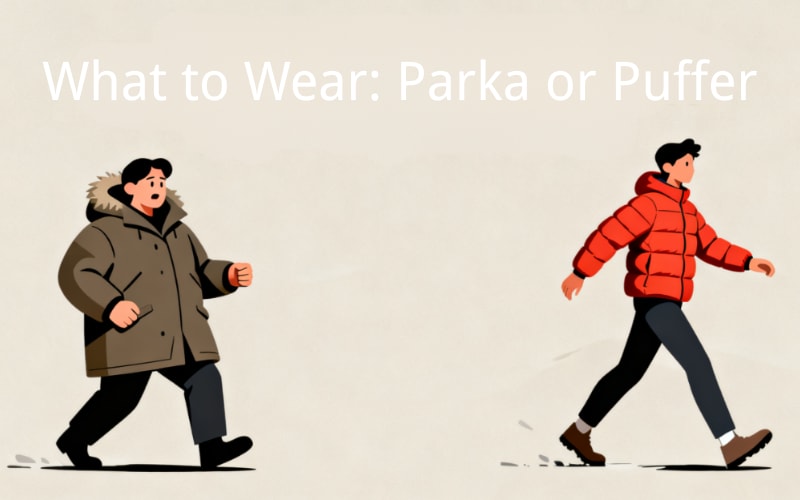
Choosing between a parka and a puffer often comes down to where you are, what you’re doing, and how your body responds to cold. Below is a clear guide to help decide which jacket performs best in different situations.
By Temperature
Below –15°C / 5°F — Parka recommended
- At this level, warmth retention and wind protection are critical. A parka’s longer cut and thicker insulation help maintain stable core temperature even during long exposure to cold air.
–10°C to 5°C — Puffer is ideal for comfort and layering
- For moderate winter conditions, a puffer offers sufficient insulation without overheating. It also layers well with base and mid-layers, providing flexibility when moving between indoor and outdoor environments.
By Weather
Wet & Windy — Parka wins for waterproofing
- In conditions with frequent rain, sleet, or strong wind, a parka’s waterproof shell and extended coverage offer reliable protection and comfort.
Dry & Cold — Puffer performs efficiently
- In low-humidity climates, a puffer provides strong insulation while staying lightweight and breathable, making it easy to wear all day without fatigue.
By Activity Level
Low Activity (commuting, watching northern lights, outdoor events): Parka
- When you’re mostly standing or sitting, a parka retains heat effectively and blocks cold air from circulating around the body.
High Activity (hiking, skiing, urban exploration): Puffer
- For movement-heavy days, a puffer allows better airflow and mobility while maintaining warmth. It’s easier to pack, layer, and manage temperature changes on the move.
A Versatile Example: Alpargali Aerogel Graphene Puffer Jacket
If you’ve ever felt torn between the protection of a parka and the mobility of a puffer, this is where the two meet. The Alpargali Aerogel Graphene Puffer Jacket represents a new generation of outerwear that combines serious cold-weather performance with urban-ready design.
Built with NASA-inspired aerogel, graphene heat technology, and Sorona® bio-based insulation, it performs across an exceptional temperature range — from –40°C to +10°C — without bulk or stiffness. The result is reliable warmth in sub-zero climates and balanced breathability when you’re active.
A Teflon™-coated shell shields against rain, snow, and wind, while a 10K breathability rating keeps comfort steady through changing conditions. Whether you’re navigating icy streets or exploring open trails, it adapts with quiet efficiency.
This is the future of winter gear — where protection meets performance, and the line between parka and puffer finally disappears.
What to Wear Around the World This Winter: Parka, Puffer, or Alpargali?
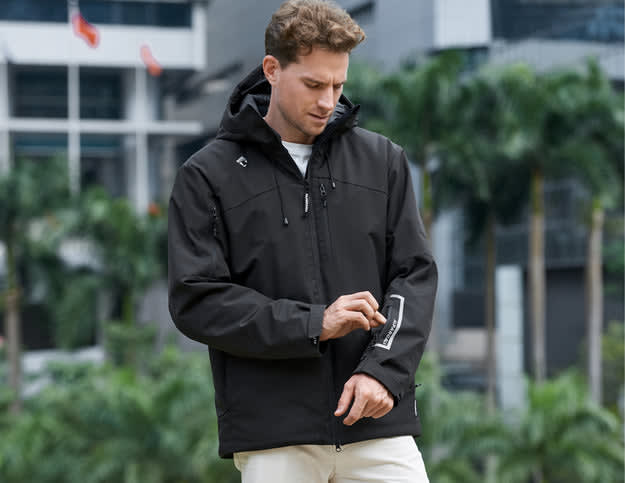
Different destinations call for different outerwear priorities — insulation, waterproofing, breathability, or simply packability. Here’s how to plan your winter wardrobe for some of the world’s most popular cold-weather destinations.
|
Destination / Climate |
Best Option |
Why It Works |
|
Northern Europe (Norway, Iceland, Finland) |
Parka or Alpargali Aerogel Graphene Puffer Jacket |
Extreme cold and wind demand insulation and waterproofing. Alpargali provides parka-level warmth with lighter weight. |
|
The Alps (Switzerland, Austria, France) |
Puffer or Alpargali Aerogel Graphene Puffer Jacket |
Changing temperatures and active days require flexibility. Aerogel insulation maintains warmth at altitude. |
|
East Asia (Japan, South Korea) |
Puffer or Alpargali |
Urban cold with mild snow. Easy to layer and pack for multi-city trips. Alpargali adapts from mild to sub-zero. |
|
North America (New York, Chicago, Toronto) |
Parka or Hybrid Puffer or Alpargali |
Cold wind and slush need strong weather resistance. Alpargali offers both warmth and sleek city styling. |
|
Western Europe (London, Paris, Amsterdam) |
Puffer or Water-resistant Jacket or Alpargali |
Damp but moderate cold — light insulation and waterproof shell ideal. |
|
Arctic & Expedition Travel |
Heavy-duty Parka or Alpargali |
Maximum coverage for sub-zero extremes. Alpargali works as a compact alternative or midlayer rated to –40°C. |
Choosing between clothing comparisons isn’t about right or wrong — it’s about how, where, and why you wear it. Parkas deliver dependable warmth and weather protection for harsh climates, while puffers offer freedom, lightness, and versatility for everyday movement.
If you often move between city streets and outdoor spaces, a new generation of Alpargali graphene jackets now bridges both worlds — built for performance, comfort, and modern design.
